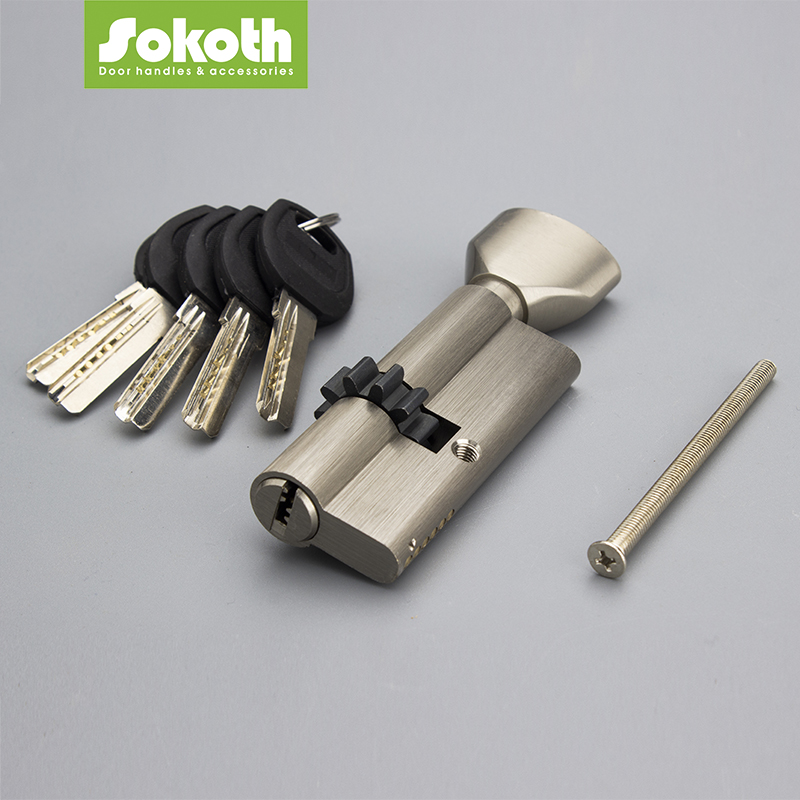What is the most secure door lock?
There are a number of ways to manipulate door locks in order to gain unauthorised access. Lock picking, key bumping, drilling, snapping and the unauthorised duplication of keys are all common methods of cylinder manipulation. The most secure locks will have protection against these forms of attack.
Lock picking
Lock picking is one of the most common methods of lock cylinder manipulation. Within the UK, the majority of cylinder locks are operated using a serrated key – with the serrations on the key align with the pins inside the cylinder to open the lock.
If a lock has fewer pins, it can be easier to pick – this is because fewer components need to be manipulated to gain entry. In order to prevent this type of manipulation, locks should be produced with a higher number of pins. Alternatively, locks with side locking pins can be used - the side locking pins provide a different pin angle to overcome when picking.
Key bumping
Key bumping is the process of making the pins within a cylinder lock ‘jump’ above the shear line (the point where all the pins align allowing the internal cylinder to rotate freely in the same as if using the genuine key) using a specific key called a bumping key. The use of unique key profiles and blocking pins to detect illegal keys and anti-bump cylinder pins greatly protects against this form of manipulation and illegal entry.
Drilling
Compared to cylinder picking and key bumping, drilling is far more destructive and obvious. Once an unprotected lock has been drilled, often a simple flat head screwdriver is all that is needed to turn the cylinder barrel – like a key – and open the lock.
The growth of cordless drills has made it far easier for people to drill locks due to the omission of power leads. Using stronger materials to manufacture the pins – such as hardened steel – will make sure that the cylinder is more robust and harder to drill through.
Snapping
Lock snapping can be achieved using a range of makeshift tools to snap the lock – once the lock is snapped, the mechanism becomes exposed and a screwdriver can be used to operate the lock and gain access. The most likely type of lock to be targeted by this kind of manipulation is Euro profile cylinders (which are commonly used in uPVC doors).
Unauthorised duplication of a key
For many, keys can be somewhat of a second thought – they can be left in pockets, bags or on desks, making them easily accessible and simple for unauthorised users to acquire. This therefore increases the chance of key duplication.
Choosing locks that are protected under patents is one way of preventing key duplication. Patents provide legal protection against illegitimate copies of keys – they can ensure that keys can only be duplicated by select organisations only (such as the manufacturer and/or carefully selected partners).
Some manufacturers also provide security cards along with keys. These cards are required to be presented at the point of ordering a duplicate key - this ensures that only those with a security card are authorised to request a new key.
At Sokoth, the security is our key priority. The lock cylinder in Sokoth has passed many tests and also can achieve a high security standard.

